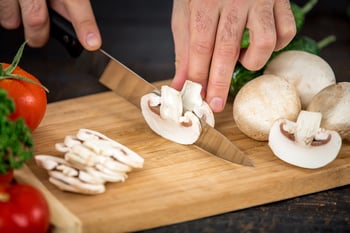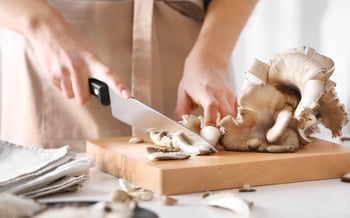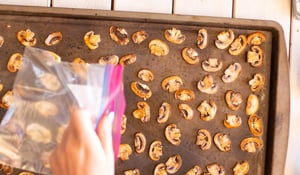While overall produce sales may be strong, demand in distinct categories always ebbs and flows.
If you’ve noticed that your mushroom set isn’t performing as well as you’d hoped, it might be time to give it some love.
Here are five ways to sell more mushrooms— all year long— straight from the fungi experts here at Monterey.
1. Perform routine category reviews.
One of the best ways to increase your grocery’s mushroom sales is to conduct an analysis on your mushroom category.
Here you’ll have the unique opportunity to compare how the overall category performed, confirm if assortment, retailers, promotions, and sets are all working in unison, and make course corrections to guide your future category growth.
When working with a mushroom vendor, you can even receive recommendations from your supplier for how to optimize your set. Industry leaders like our team at Monterey are always keeping up with new consumer and market trends and have spent decades perfecting strategies for increasing retailer mushroom sales.
2. Build attractive mushroom displays.
You know that customers want neat, orderly displays— especially in the produce department where freshness matters— and keeping your mushroom display tidy is a big must!
But organization isn’t just about keeping mushroom packages facing backward and ensuring no loose caps are floating around. Many mushroom manufacturers color-code their products, either with distinctly different colored packaging or with color-specific labels. Within your mushroom set, be mindful of color coordinating, grouping specific colors/varieties of mushrooms together for a balanced aesthetic.
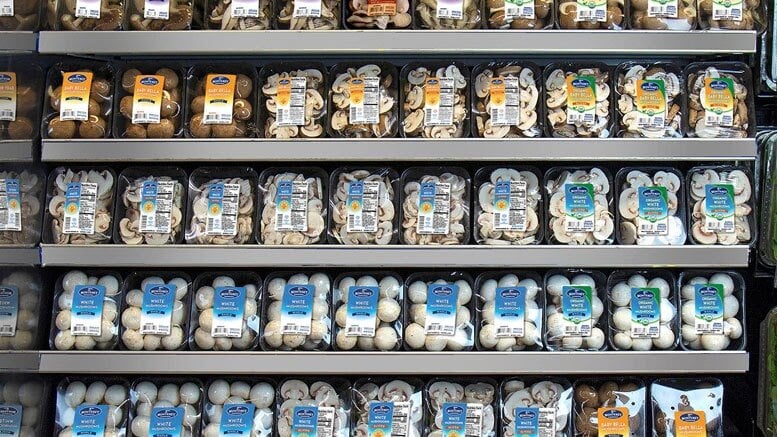
For example, grouping White mushrooms (both whole and sliced) together is a common practice. Same with sliced Baby Bellas and whole caps. Typically, wild mushrooms all share their own row.
While there’s no right or wrong way to group them, per se, there are certain tactics we’ve learned over the years that prove more successful for mushroom sales. It’s all about experimenting to see what your customers prefer or observing what data trends suggest. (And having the right partner to offer their expert recommendations!).
Tossing out too many mushrooms? Don’t forget to move your oldest mushrooms forward well before they reach expiration to avoid costly shrink.
3. Provide a diverse variety of mushrooms.
Major grocers typically stock White, Baby Bella, and Portabella varieties, since these consistently stable sellers are what most everyday shoppers are familiar with.
But while these best-selling mushrooms are typically safe bets, they come in a variety of forms. For example, all three can be sold whole as well as sliced.
Additionally, some mushroom growers like us at Monterey take it a step further by offering White, Baby Bella, and Portabella in organic or High Vitamin D varieties. Depending on your customers’ preferences and the types you choose to stock, these variances alone may take up two rows of products.
Let’s not forget package sizes, which typically vary in 8 or 16-ounce packages, depending on the variety.
Also consider that not all retailers carry specialty varieties— like Oysters, Shiitakes, King Trumpets, Maitake, Enoki, or Beech mushrooms— and your choice to stock these exotic varieties could set your mushroom set apart from the competition.
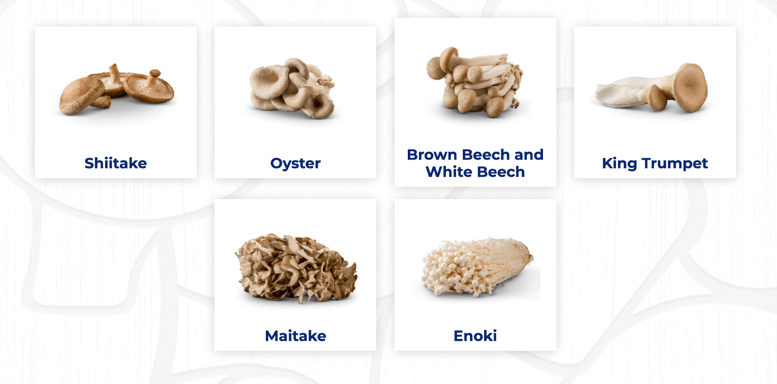
According to data from The Mushroom Council, “specialty mushrooms had the highest incremental dollar and volume growth and added +$972k (+13.4%) and +104k lbs. (+17.8%) to the category” over four weeks late May 2021.
Not familiar with some of these exotic mushroom varieties? Learn more about Shiitake and other specialty mushrooms here.
4. Integrate your organic mushrooms into the full mushroom set.
While some segments of produce perform well in their own standalone organic section, mushrooms are usually not one of them. Data shows that when organic mushrooms are displayed with other conventional mushrooms on the same shelf set— versus placed in a standalone organic section— units sales and profits increase!
That’s right. Our case study suggests that conventional mushroom shoppers will buy organic mushrooms if they are displayed with all mushrooms if the product is fresh and at a reasonable premium.
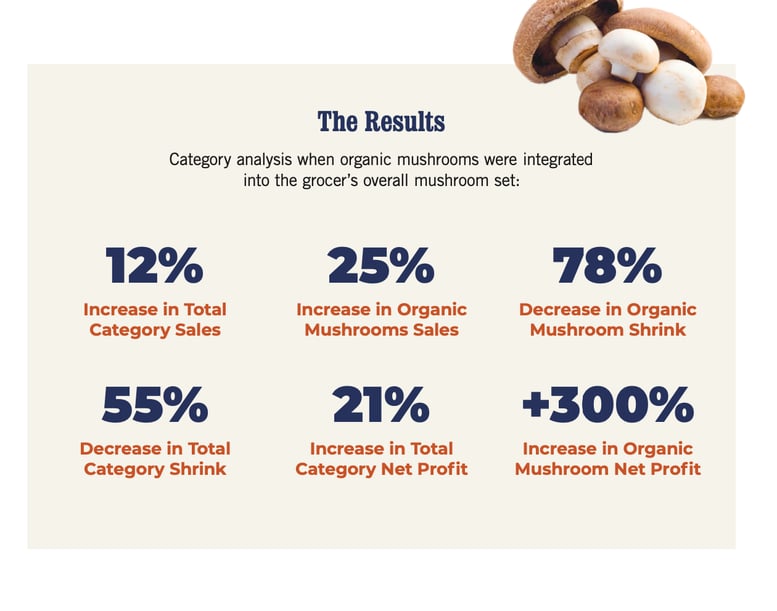
For retailers who aren’t currently stocking organic mushrooms, learn more about our organic offerings, available in 8, 16, and 24-ounce packages.
5. Stock High Vitamin D mushrooms.
Health-conscious consumers who purchase organic mushrooms are also looking for ways to sneak more nutrients into their diet. Luckily, they can with the right mushroom set.
Certain mushrooms are rated “High Vitamin D,” meaning they contain a significant amount of this important sunshine vitamin. While many receive this vitamin from the sun’s rays, it’s also a nutrient we can incorporate into our diet, which may improve your customer’s immune system, improve bone health, and more.
In fact, High Vitamin D products are a growing trend for retailers. Food manufacturers are starting to enhance their top-selling products with Vitamin D mushroom powder, lining the breakfast aisle and beyond.
Adding High Vitamin D mushrooms to your produce selection is just one more way to appeal to a broader audience and keep up with other grocers, who are actively weaving these products into their inventory.
How Big is this High Vitamin D Mushroom Trend?
Your customers are demanding more nutritious products than ever before, so the more you can enhance your produce department, the better.
Learn more about the importance of vitamin D and stocking mushrooms high in it by downloading our free ebook: Everything You Need to Know About High Vitamin D Mushrooms.
Learn More About How to Get Our High Vitamin D Mushrooms On Your Shelves:



